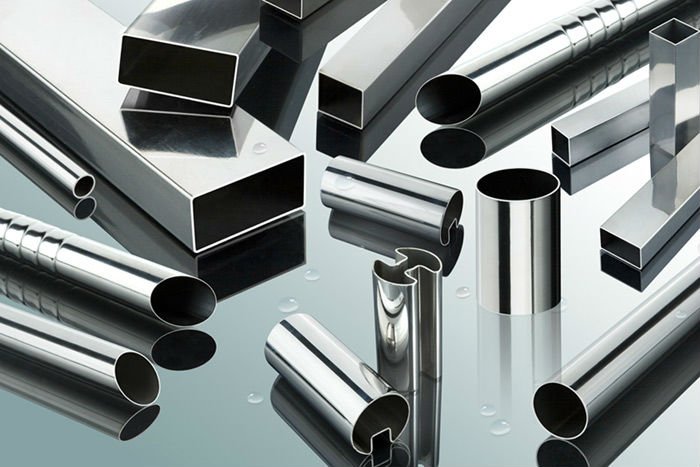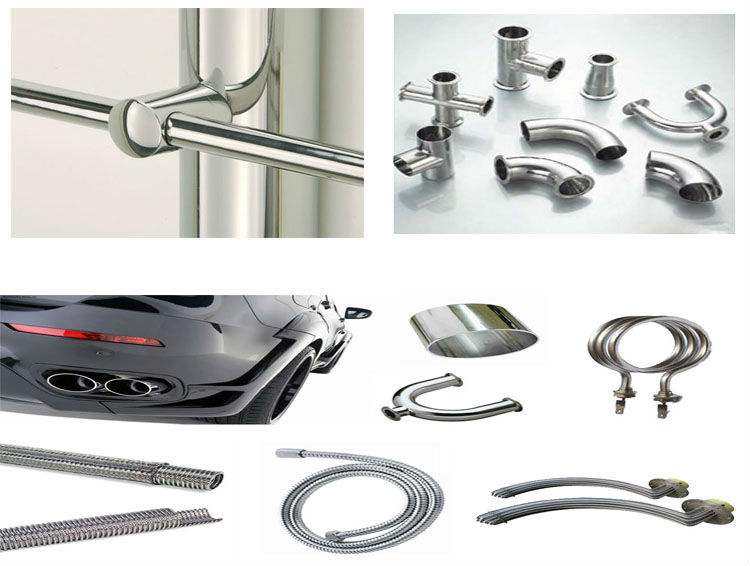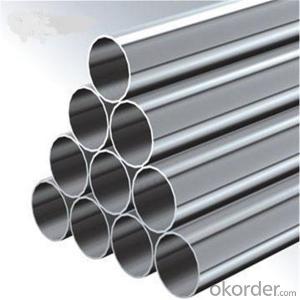TIG Welded 304 Stainless Steel Rectangular Tube/Pipe
- Loading Port:
- Shanghai
- Payment Terms:
- TT OR LC
- Min Order Qty:
- 5 m.t.
- Supply Capability:
- 25000 m.t./month
OKorder Service Pledge
OKorder Financial Service
You Might Also Like
Item specifice
eatures | 1.We are the coil agent in Foshan,offer coils to many other factories as the pipe material. |
2.We have more than 15 years experience in stainless steel market,a professional manufacturer. | |
3.We completely produce the pipes,from the material picking,rolling,striping,pipe making,polishing,and package all these procession. | |
Brand | ZaiHui |
Certification | ISO 9001:2008 |
ISO 14001:2004 | |
Standard | ASTM,AISI,JIS,DIN,EN,SUS,GB |
Type | Welded,TIG Welded |
Steel Grade | 201,202,301,304,316,430,304L,316L |
Surface Treatment | 180grit,240grit,320grit,400grit,500grit,600grit,HL,2B,Satin,Mirror.light,shiny,bright,brushed,mat |
Round pipe | |
Outer Diameter | 9.5,12.7,15.9,17,18,19.1,20,21,22,23,25.4,28,31.8,33,35,36,38.1,40,41.8,42,45,48,50,50.8,56,57,60,63.5,76.2,80,89,101.6,108,114,127, |
Thickness | 0.25mm to 3.0mm |
Length | 3000mm to 8000mm |
Square pipe | |
Side Length | 10*10,12*12,15*15,18*18,19*19,20*20,22*22,23*11,24*12,24*24,25*25,28*28,30*30,23*36,36*36,38*38,40*40,48*23,48*48,50*50, |
Thickness | 0.25mm to 3.0mm |
Length | 3000mm to 8000mm |
Tolerance | Thickness:+/-0.02mm; |
Length:+/-5mm | |
Quatity:+/-5% | |
Character | Rustproof, good corrosion resistance, anti-wearing, good-appearance, excellent mechanical properties. |
Application | Window,Door,Handrail,Curtain rail,Towel rail,Flagpole,Lamp pole,Sanitary Instrument,Billboard,Decoration,Upholstery, |
| Gade Chemical Composition | 201 | 202 | 301 | 304 | 316 | 430 | 304L | 316L |
| C | ≤0.08 | ≤0.06 | ≤0.06 | ≤0.06 | ≤0.08 | ≤0.12 | ≤0.03 | ≤0.03 |
| S | ≤0.02 | ≤0.02 | ≤0.03 | ≤0.03 | ≤0.03 | ≤0.03 | ≤0.03 | ≤0.03 |
| P | ≤0.075 | ≤0.06 | ≤0.045 | ≤0.035 | ≤0.045 | ≤0.04 | ≤0.045 | ≤0.045 |
| Mn | 8.5-10.5 | 7.5-10 | ≤2.0 | ≤2.0 | ≤2.0 | ≤1.0 | ≤2.0 | ≤2.0 |
| Si | ≤1.0 | ≤1.0 | ≤1.0 | ≤1.0 | ≤1.0 | ≤1.0 | ≤0.75 | ≤0.75 |
| Cr | 14-15 | 14-16 | 16-18 | 17-20 | 16-18 | 16-18 | 17-20 | 16-18 |
| Ni | 0.8-1.2 | 4-6 | 4-7 | 8-12 | 12-16 | ≤0.05 | 8-12 | 12-16 |
| Gade Physical Property | 201 | 202 | 301 | 304 | 316 | 430 | 304L | 316L |
| Density | 7.9 | 7.9 | 8 | 8 | 8 | 7.8 | 8 | 8 |
| The Conductivity | 16.3 | 16.3 | 16.3 | 16.3 | 14.2 | 26 | 16.3 | 16.3 |
| Specific Heat(0-100Cp) | 0.5 | 0.5 | 0.5 | 0.5 | 0.5 | 46 | 0.5 | 0.5 |
| Abrasion Resistance | Good | Good | Good | Good | Good | Good | Good | Good |
| Cold Forming | Fair | Good | Good | Good | Good | Good | Good | Good |
| Weldability | Good | Good | Excel | Excel | Excel | Fair | Excel | Excel |
| Melting Point | 1400-1420 | 1400-1420 | 1400-1420 | 1400-1450 | 1370-1400 | 1430-1510 | 1400-1450 | 1370-1400 |


3. Applications
Milk and food industry, pharmaceutical industry, industries with special internal surface requirements.

4. Stainless steel conservation
Stainless steel is a popular metal for appliances these days. Many kitchen appliances, both large and small, are made with stainless steel. Pots and pans and eating utensils are also made with stainless steel. One advantage of stainless steel is that is very resistant to rusting. But it can get rust stains from transference of rusty objects. You can keep stainless steel rust-free by following a few simple steps.
Clean frequently with a cleaner and water. Any cleaner that is safe for glass is usually safe for stainless steel.
Scrub off all rust from these objects with a scrubbing pad or steel wood pad. This means getting rid of rust from pots and pans before putting them into a stainless steel sink or on top of a stainless steel stove.
Put a rubber mat at the bottom of the stainless steel sink before placing rusted pots and pans (such as cast iron cookware) in the sink.
Apply a thin layer of lubricant (such as mineral oil) to the surface of the stainless steel. This prevents rust from forming.
Inspect equipment frequently, if you notice discoloration, tarnish or water stains, increase the frequency of your fresh water rinses to reduce accumulated chemicals
- Q:What is the pressure rating of stainless steel pipes?
- The pressure rating of stainless steel pipes may vary based on various factors, including the grade of stainless steel, pipe wall thickness, and pipe diameter. Typically, stainless steel pipes have high pressure ratings due to the material's strength and corrosion resistance. However, consulting the relevant standards and specifications is necessary to determine the precise pressure rating for a specific stainless steel pipe. These standards (such as ASME B31.3 or ASTM A312) offer guidelines and calculations to establish the maximum allowable working pressure (MAWP) based on the mentioned factors. To ensure safety and prevent any potential failures or leaks, it is crucial to verify that the pressure rating of the stainless steel pipes is suitable for the intended application.
- Q:How do stainless steel pipes compare to carbon fiber pipes?
- Stainless steel pipes possess distinct qualities and find usage in diverse fields. Renowned for their robustness and power, they exhibit exceptional resistance to corrosion and can withstand elevated temperatures and pressures. Consequently, they prove suitable for various industries, including oil and gas, chemical, and construction. Boasting an elongated lifespan and the ability to bear heavy loads, stainless steel pipes emerge as a reliable option for numerous applications. Nevertheless, their relatively hefty weight necessitates additional support structures. Conversely, carbon fiber pipes, characterized by their lightness and high strength-to-weight ratio, serve as an alternative. Crafted from carbon fibers embedded in a resin matrix, they yield a formidable and rigid material. Aerospace, automotive, and sports equipment industries commonly employ carbon fiber pipes. Their lightweight nature permits enhanced fuel efficiency in vehicles and augmented performance in sports equipment. However, carbon fiber pipes prove pricier than their stainless steel counterparts and may lack the desired resilience to extreme temperatures or corrosive surroundings. To summarize, stainless steel pipes excel in durability and corrosion resistance, making them well-suited for demanding tasks. Carbon fiber pipes, on the other hand, offer lightweight construction and a commendable strength-to-weight ratio, rendering them ideal for weight reduction-focused applications. Ultimately, the choice between stainless steel and carbon fiber pipes hinges on specific requirements and the trade-offs between cost, weight, and performance.
- Q:Can stainless steel pipes be used for food storage tanks?
- Yes, stainless steel pipes can be used for food storage tanks. Stainless steel is a highly durable and corrosion-resistant material that is safe for storing food and beverages. It is non-reactive and does not leach any harmful substances into the stored products, making it an ideal choice for food storage tanks.
- Q:How do you calculate the wall thickness for stainless steel pipes under external pressure?
- To calculate the wall thickness for stainless steel pipes under external pressure, you need to consider various factors such as the material properties, design codes, and the applied external pressure. Here is a general approach to calculating the wall thickness: 1. Determine the design pressure: The first step is to identify the external pressure that the stainless steel pipe will be subjected to. This pressure can be due to factors like fluid flow, environmental conditions, or operational requirements. 2. Determine the material properties: Stainless steel pipes have different grades, each with its own mechanical properties. Consult the material specifications to obtain the values for the yield strength (Sy) and ultimate tensile strength (Su) of the specific stainless steel grade you are working with. 3. Determine the allowable stress: The allowable stress (Sa) is the maximum stress that the material can sustain under the given conditions. It is usually provided by design codes or standards such as ASME B31.3 for process piping or ASME Section VIII for pressure vessels. 4. Calculate the design pressure thickness: Use the following formula to calculate the design pressure thickness (t): t = (P * D) / (2 * Sa) where P is the design pressure and D is the outside diameter of the stainless steel pipe. 5. Determine the corrosion allowance: Since stainless steel is prone to corrosion, it is important to consider a corrosion allowance to ensure the longevity of the pipe. The corrosion allowance is typically specified by the design codes or industry standards. 6. Calculate the final wall thickness: Add the corrosion allowance to the design pressure thickness calculated in step 4 to obtain the final wall thickness. It is important to note that this is a general approach, and specific design codes or standards may have additional requirements or factors to consider. Therefore, it is recommended to consult the relevant design codes, standards, or a qualified engineer to ensure accurate and safe calculations for your specific application.
- Q:Can stainless steel pipes be used for architectural applications?
- Yes, stainless steel pipes can be used for architectural applications. Stainless steel is a durable and versatile material that offers a range of benefits for architectural purposes. It is corrosion-resistant, which makes it suitable for outdoor applications where it may be exposed to harsh weather conditions. Additionally, stainless steel pipes are aesthetically pleasing and can provide a modern and sleek look to architectural designs. They can be used for various architectural elements such as handrails, balustrades, structural supports, and decorative features. The strength and reliability of stainless steel pipes also make them suitable for load-bearing applications, ensuring the safety and stability of architectural structures. Overall, stainless steel pipes offer a combination of functionality, durability, and aesthetics that make them a popular choice for architectural applications.
- Q:What is the difference between electropolished and bright annealed stainless steel pipes?
- Electropolished stainless steel pipes undergo a process called electropolishing, which involves the removal of surface impurities and oxidation through an electrochemical process. This results in a smooth, shiny, and corrosion-resistant surface finish. On the other hand, bright annealed stainless steel pipes are heat-treated to achieve a bright, reflective surface finish. While both processes enhance the aesthetics of the pipes, electropolishing provides additional benefits such as improved cleanability and increased resistance to corrosion.
- Q:What is the difference between martensitic and precipitation-hardening stainless steel pipes?
- Martensitic and precipitation-hardening stainless steel pipes are two different types of stainless steel alloys that offer distinct characteristics and properties. Martensitic stainless steel pipes are known for their high strength and hardness. They are formed by quenching and tempering, a process that involves rapid cooling followed by reheating to achieve the desired properties. This type of stainless steel is magnetic and can be heat-treated to further enhance its strength. Martensitic stainless steel pipes are commonly used in applications where high mechanical strength, such as in automotive parts or cutlery, is required. On the other hand, precipitation-hardening stainless steel pipes are alloyed with elements like copper, aluminum, or titanium. The addition of these elements allows for the formation of precipitates during heat treatment, resulting in increased strength and corrosion resistance. Precipitation-hardening stainless steel pipes also offer good weldability and can be easily machined. They are typically used in industries such as aerospace, oil and gas, and chemical processing, where a combination of strength and corrosion resistance is crucial. In summary, the main difference between martensitic and precipitation-hardening stainless steel pipes lies in their composition and the heat treatment processes involved. Martensitic stainless steel pipes are hardened through quenching and tempering, offering high strength and hardness, while precipitation-hardening stainless steel pipes are strengthened through the formation of precipitates during heat treatment, providing a balance of strength and corrosion resistance.
- Q:How do you prevent oxidation in stainless steel pipes?
- There are several methods to prevent oxidation in stainless steel pipes. One effective way is to apply a protective coating or finish on the surface of the pipes. This can be done using various types of coatings such as paints, epoxy, or polyurethane. These coatings act as a barrier, preventing oxygen from coming into contact with the stainless steel and therefore reducing the chances of oxidation. Additionally, regular cleaning and maintenance of the pipes is crucial in preventing oxidation. It is important to remove any dirt, debris, or corrosive substances that may have accumulated on the surface of the pipes. This can be done using mild detergents or specialized cleaning agents specifically designed for stainless steel. Another preventive measure is to ensure proper ventilation in the area where the stainless steel pipes are installed. Adequate ventilation helps to minimize the presence of moisture or humidity, which can accelerate the oxidation process. Additionally, keeping the pipes dry and avoiding prolonged exposure to water or moisture is essential in preventing oxidation. Lastly, it is important to select the appropriate grade of stainless steel for the intended application. Different grades of stainless steel offer varying levels of resistance to oxidation. For example, austenitic stainless steel grades such as 304 and 316 are highly resistant to oxidation and are commonly used in applications where corrosion resistance is crucial. Overall, a combination of preventive measures such as protective coatings, regular cleaning, proper ventilation, and selecting the appropriate stainless steel grade can help effectively prevent oxidation in stainless steel pipes.
- Q:How do stainless steel pipes perform in extreme weather conditions?
- Stainless steel pipes perform exceptionally well in extreme weather conditions due to their high resistance to corrosion, heat, and cold. They can withstand extreme temperatures, heavy rainfall, snow, and intense sunlight without deteriorating or losing their structural integrity. This makes them a reliable choice for various applications in industries such as oil and gas, construction, and marine environments.
- Q:Are stainless steel pipes suitable for mining industries?
- Yes, stainless steel pipes are widely used and suitable for the mining industry. Stainless steel is known for its excellent corrosion resistance, making it ideal for applications in harsh and corrosive environments such as mines. This resistance to corrosion is particularly important in the mining industry, where pipes are exposed to various chemicals, water, and minerals that can accelerate the corrosion process. Additionally, stainless steel pipes are highly durable and can withstand extreme temperatures, making them suitable for the demanding conditions encountered in mining operations. Furthermore, stainless steel pipes offer high strength and reliability, ensuring the safe and efficient transportation of fluids, gases, and slurries throughout the mining process. Overall, stainless steel pipes are a preferred choice in the mining industry due to their corrosion resistance, durability, and strength, making them a reliable and long-lasting option for mining operations.
1. Manufacturer Overview |
|
|---|---|
| Location | |
| Year Established | |
| Annual Output Value | |
| Main Markets | |
| Company Certifications | |
2. Manufacturer Certificates |
|
|---|---|
| a) Certification Name | |
| Range | |
| Reference | |
| Validity Period | |
3. Manufacturer Capability |
|
|---|---|
| a)Trade Capacity | |
| Nearest Port | |
| Export Percentage | |
| No.of Employees in Trade Department | |
| Language Spoken: | |
| b)Factory Information | |
| Factory Size: | |
| No. of Production Lines | |
| Contract Manufacturing | |
| Product Price Range | |
Send your message to us
TIG Welded 304 Stainless Steel Rectangular Tube/Pipe
- Loading Port:
- Shanghai
- Payment Terms:
- TT OR LC
- Min Order Qty:
- 5 m.t.
- Supply Capability:
- 25000 m.t./month
OKorder Service Pledge
OKorder Financial Service
Similar products
New products
Hot products
Hot Searches
Related keywords




























